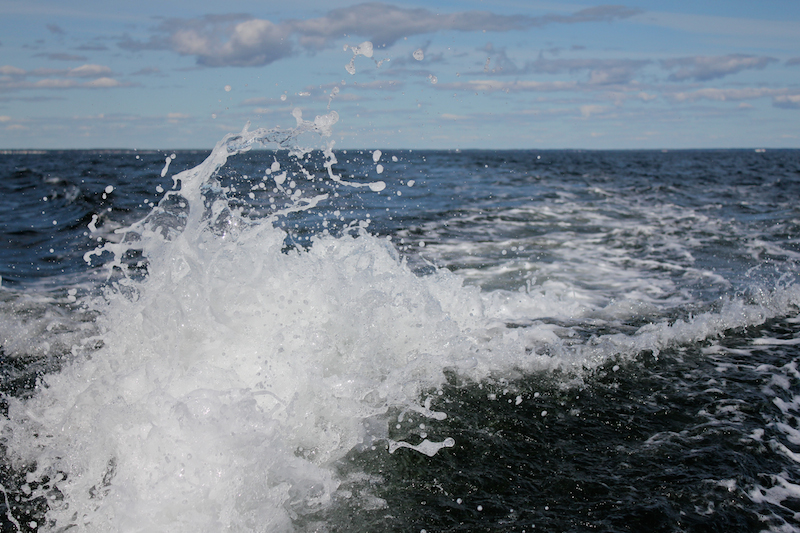
For the effective management and conservation of fish species in aquatic environment, it is necessary to efficiently monitor water quality and assess the biodiversity status including fish species distributions. eDNA and new research by U of M chemists, will help this cause.
Feds support an environmental DNA laboratory at U of M
Environmental DNA (e-DNA) is an efficient and non-invasive new way to sample organisms, and it is revolutionizing biodiversity monitoring in Canada. eDNA is DNA extracted from environmental samples, like water and soil, without having to isolate the target organisms. Current biodiversity monitoring relies on visual surveying to identify species, which requires expensive, labour-intensive sampling that is, invasive to the species and unsafe for the ecosystem.
On Apr. 23, Parliamentary Secretary Terry Duguid, Member of Parliament for Winnipeg South, on behalf of the Honourable Navdeep Bains, Minister of Innovation, Science and Economic Development and Minister responsible for Western Economic Diversification Canada (WD), announced an investment of $1,126,800 towards the University of Manitoba Centre for Oil and Gas Research and Development (COGRAD) to establish an environmental DNA (e-DNA) laboratory. The eDNA lab will be a natural extension of COGRAD’s unique service offering to the oil and gas industry in Canada as an internationally recognized environmental monitoring and remediation facility.
“This funding will allow COGRAD to combine a unique strategy, in-depth water quality assessment with eDNA metabarcoding technology,” Chemistry professors Jorge Stetefeld, Canada Research Chair in Structural Biology and Biophysics, and Gregg Tomy, said in a joint statement. “This will be used to measure fish species assemblage and will expand our studies to explore caribou migration in the Baker Lake area. Our approach addresses urgent questions about the impact of climate change and the impact of industry activities on Inuit people in the Canadian Arctic.”
(Read more about their research in the community here.)
Through this investment, the University will purchase and install highly specialized equipment that will enable COGRAD to offer novel, efficient, and customized eDNA techniques for the biodiversity monitoring of fish habitats during mining activities and increase environmentally sustainable energy production in the oil and gas industry. This investment will promote innovation, skills development, and growth in the oil and gas industry across Canada and result in the creation of 14 jobs.
“This injection of funding to Drs. Stetefeld and Tomy’s leading program in monitoring and analyzing environmental contaminants will advance their research program further, into new areas of discovery,” said Digvir Jayas, Vice-President (Research and International) and Distinguished Professor at the University of Manitoba.
Canada’s Innovation and Skills Plan aims to build an economy in which Canadians have access to high-quality jobs and Canadian businesses are well-placed to participate in a rapidly evolving and competitive global marketplace.
“Our government is laying the foundation for Canadians to become more competitive and succeed in the global economy. Today’s investment at the University of Manitoba builds on our competitive advantages and will result in a one-of-a-kind facility that will benefit the oil and gas industry, boost growth, and create good, middle-class jobs for Canadians,” said Minister Bains.

Drs. Jorg Stetefeld (centre) and Gregg Tomy (3rd from right) and their teams, with MP Terry Duguid (4th from right) and Dr. Digvir Jayas (5th from right).
About COGRAD
There is an urgent need for novel, efficient and customized techniques for large-scale biodiversity monitoring in industrial environment. For the effective management and conservation of fish species in aquatic environment, it is necessary to efficiently monitor water quality and assess the biodiversity status including fish species distributions. Traditional monitoring techniques which relies on physical identification of species by visual surveys and counting of individuals remain problematic due to difficulties associated with correct identification of cryptic species, non-standardized sampling, being expensive and labor intense and their invasive nature. Also, application of current methods is restricted in industrial environments or remote and arctic area.
Recently, the eDNA method for the direct detection of specific DNA from water has been recognized as a powerful tool for monitoring aquatic species. Environmental DNA – defined as: genetic material obtained directly from environmental samples without any obvious signs of biological source material – is an efficient, non-invasive and easy-to-standardize sampling approach. Coupled with sensitive, cost/field time-efficient and ever-advancing DNA sequencing technology, it may be an appropriate candidate for the challenge of biodiversity monitoring in remote/arctic area and industrial environment.
Although knowledge on biodiversity is incomplete or even un-described for numerous taxa and geographical regions, there is international political agreement to halt the current loss in biodiversity that causes as a result of industrial activities. All such conservation efforts to save biodiversity essentially depend on biological monitoring for obtaining precise data on species distributions and population sizes on a relevant ecological and political time scale.
Obtaining information of species, populations and communities by retrieving DNA from environmental samples (eDNA) holds the potential of combating many of these challenges associated with biodiversity monitoring. The fact that DNA from higher organisms persists in the environment, where it can be sampled, extracted and analyzed, has been a major technological and scientific breakthrough within the last decade. Equally important to industry is the development of monitoring tools able to measure biodiversity in order to identify any potentially negative impacts of industrial activity on aquatic organisms. The ability of an analytical laboratory to conduct monitoring studies from an industry perspective is required to save ecosystem and halt its changes as a result of their activity. The requested eDNA metabarcoding platform is the tool capable of assessing biodiversity in the aquatic environment and will propel COGRAD onto the international stage.
Research at the University of Manitoba is partially supported by funding from the Government of Canada Research Support Fund.








